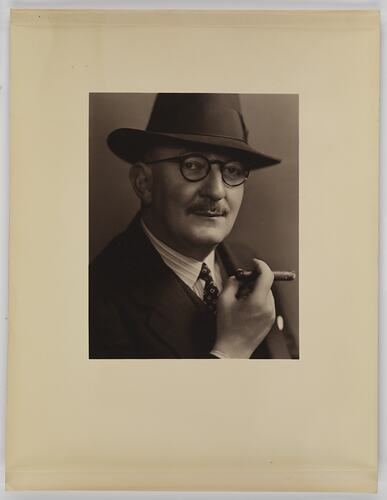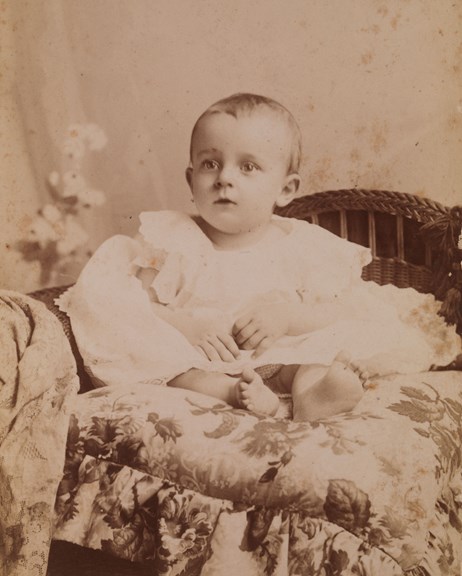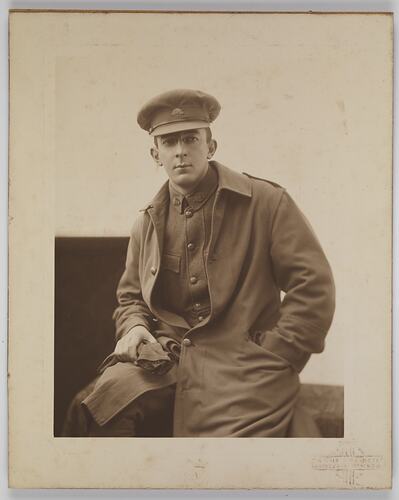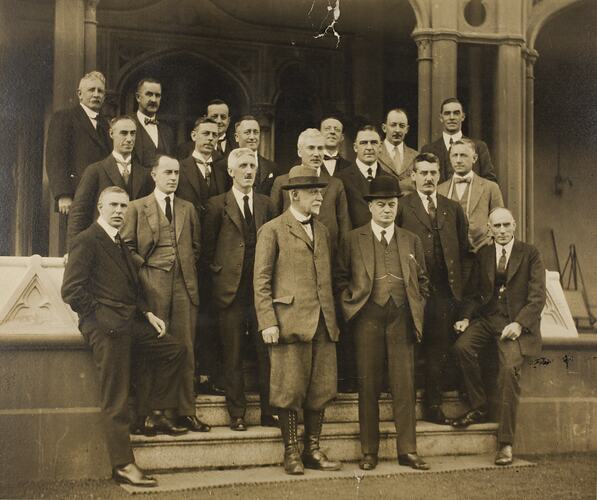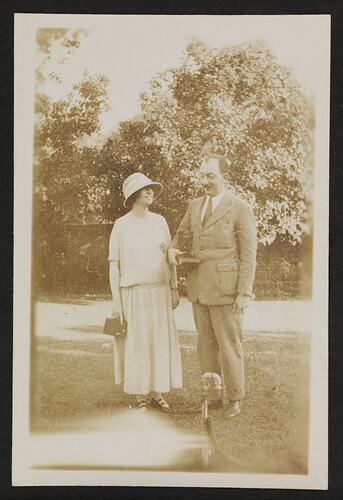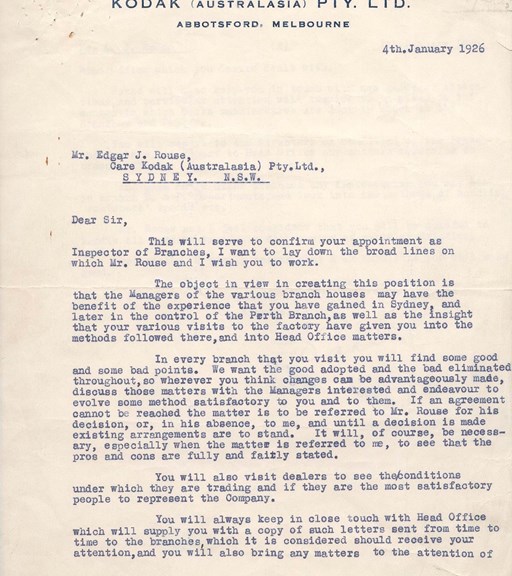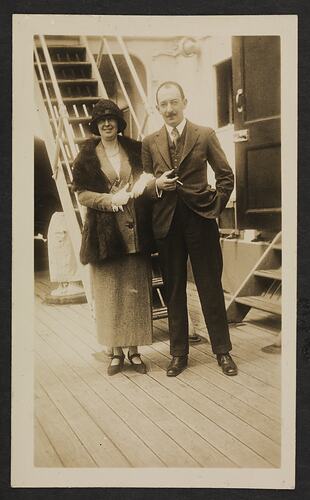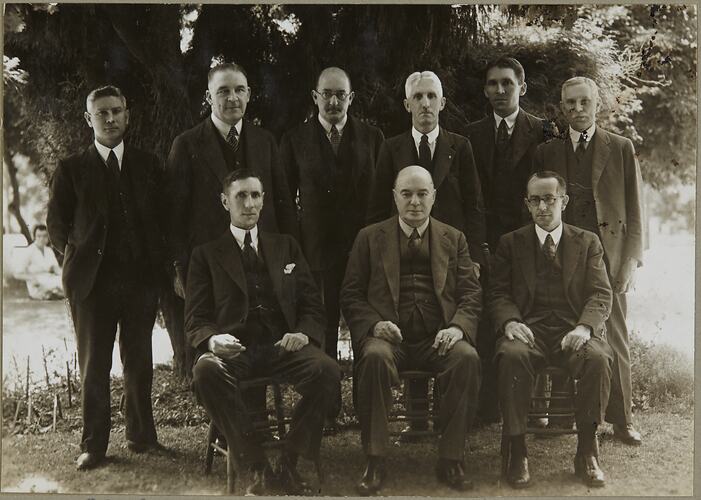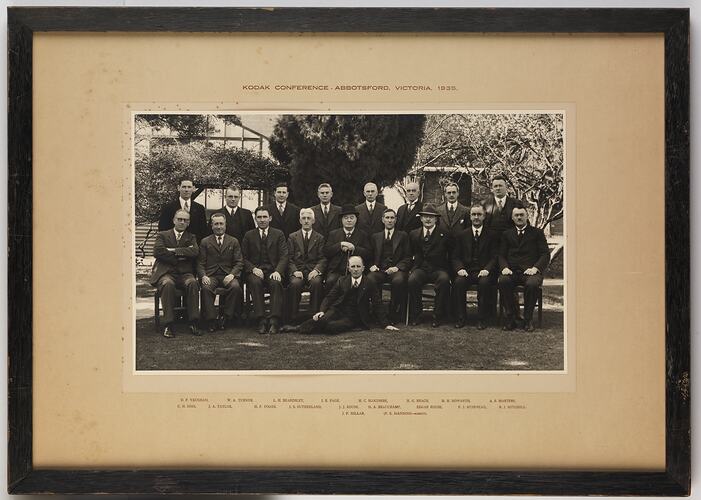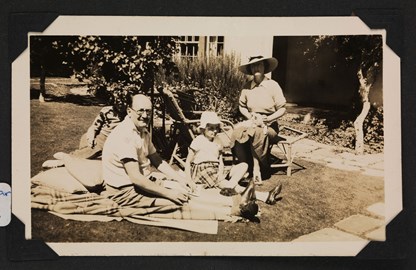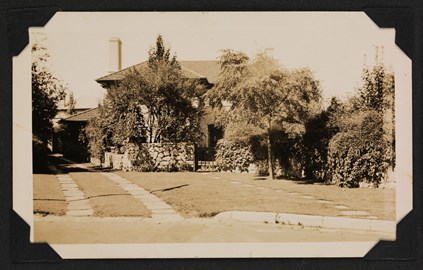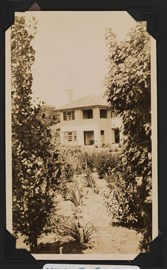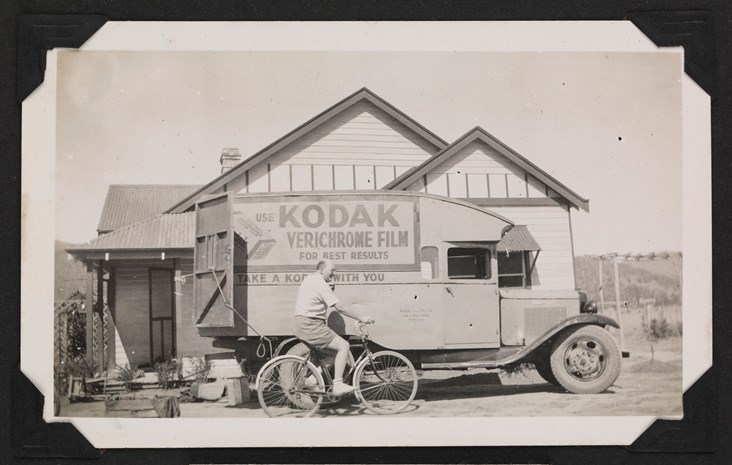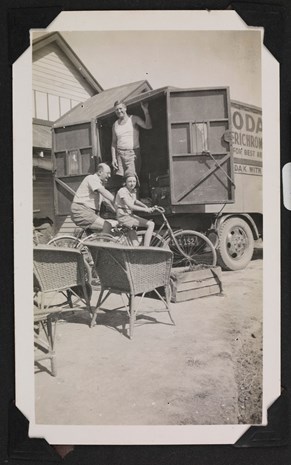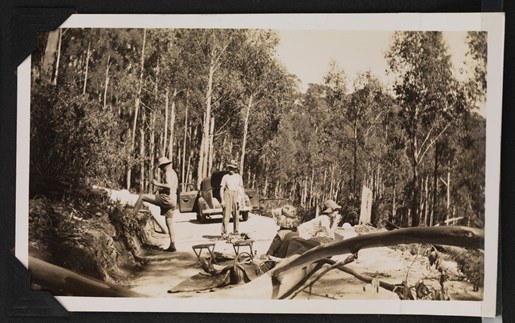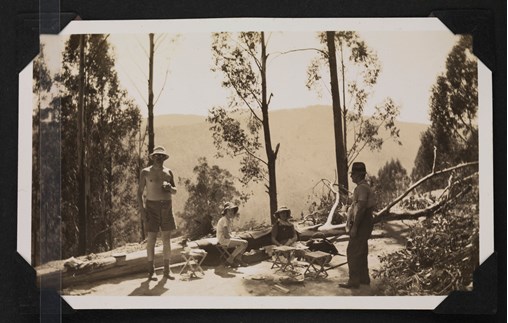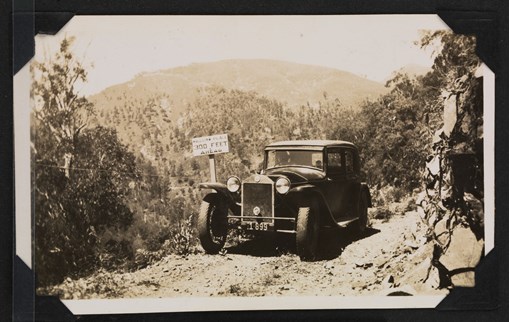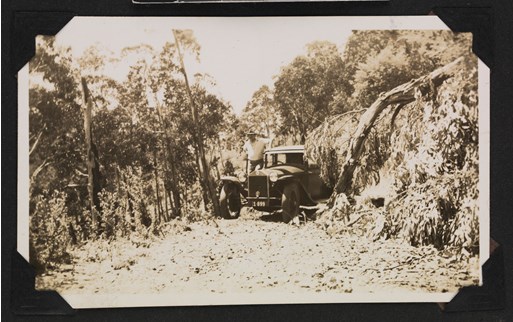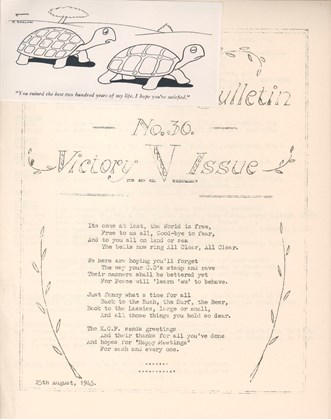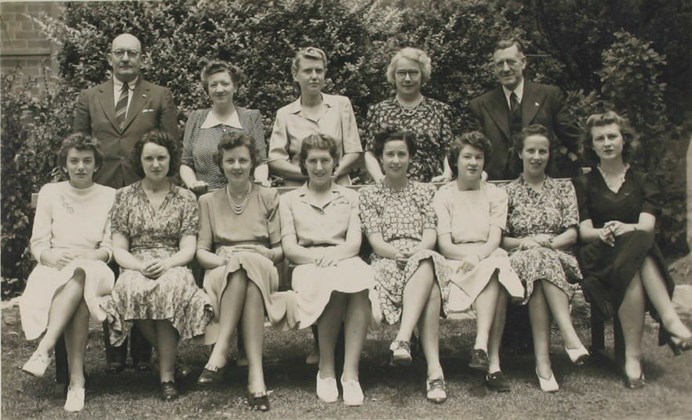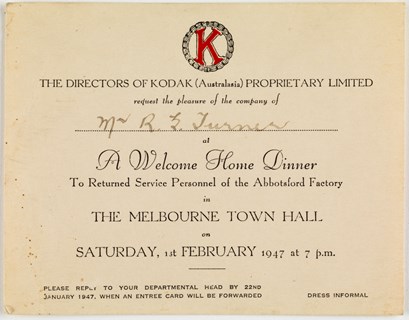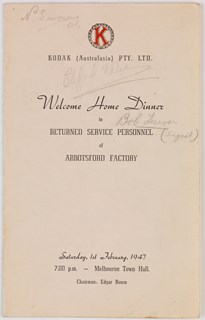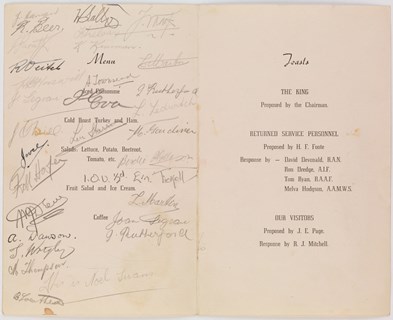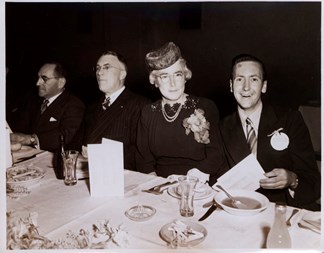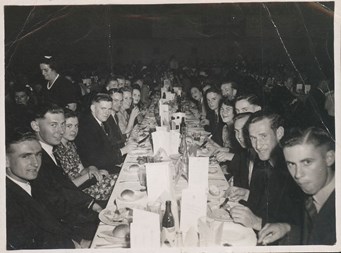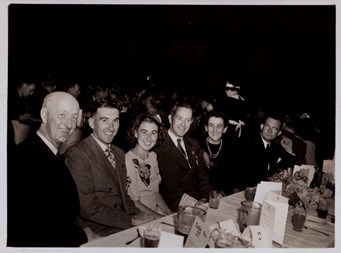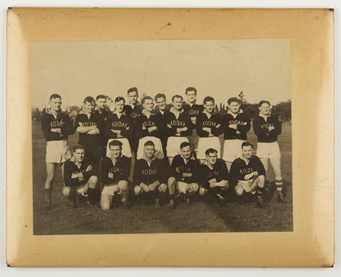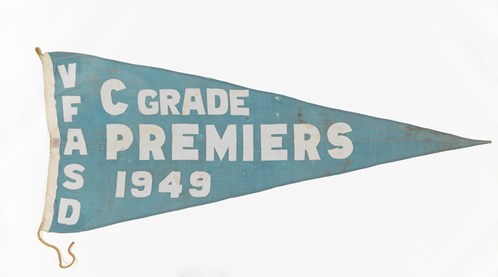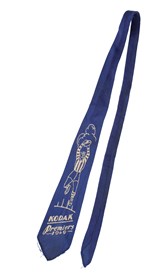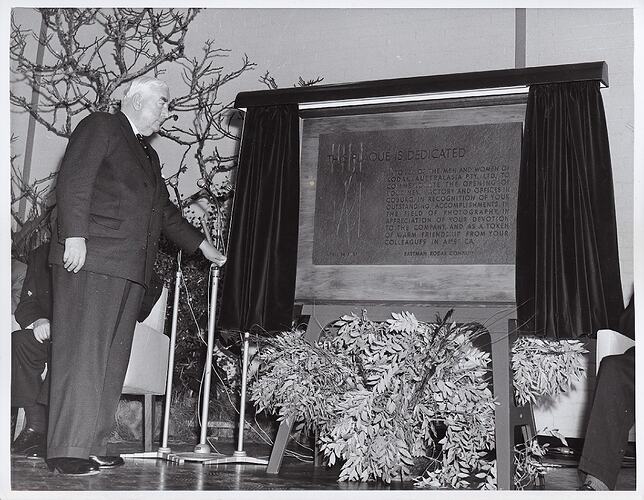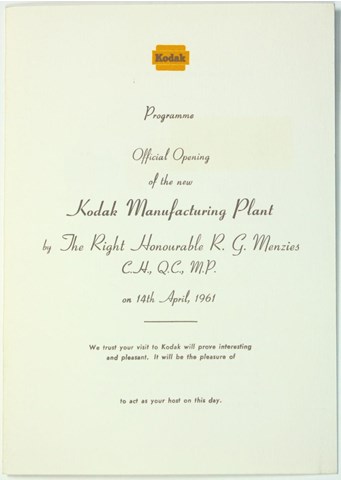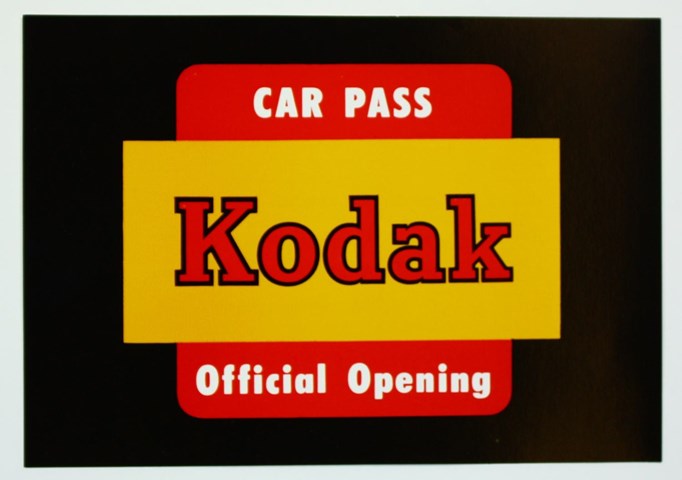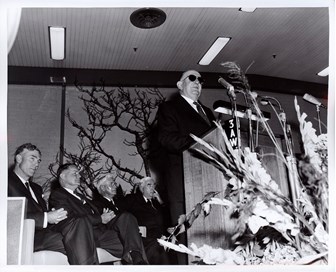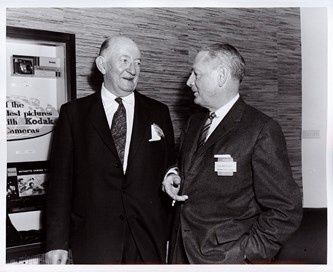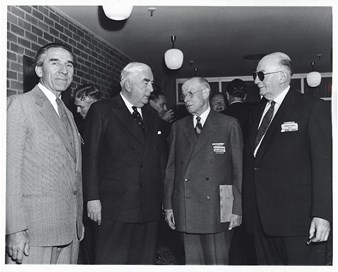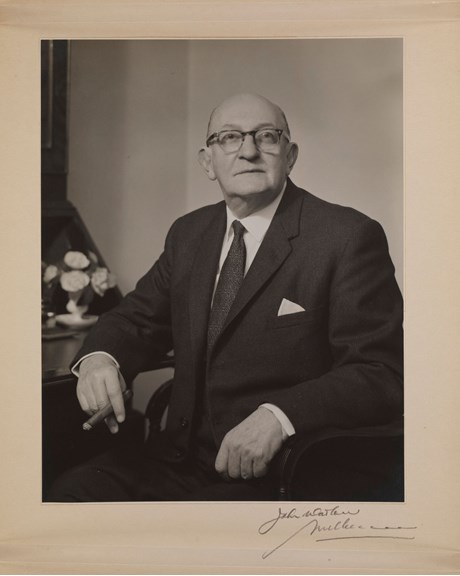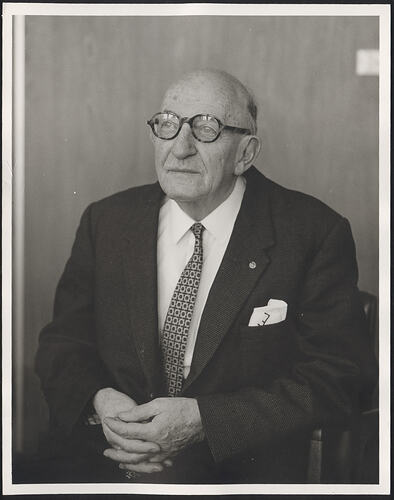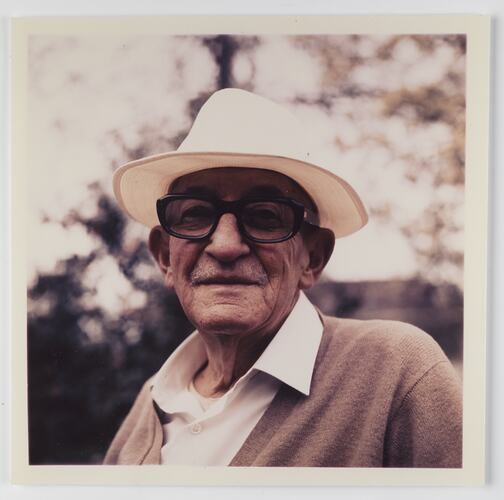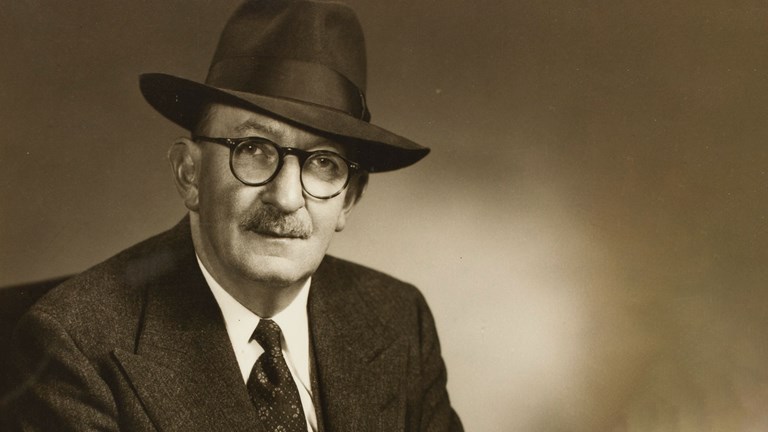
Edgar Rouse
Radiologist, Kodak Managing Director, Benefactor
Edgar Rouse (1894–1974) was born in October 1894 at Queenscliffe, his family’s home in Sydney, to parents John Joseph ‘JJ’ Rouse, Kodak managing director, and Anna Rouse, née Elsdon.
"Personally, I simply remark that I am sure that you will make good."Thomas Baker correspondence to Edgar Rouse, 4 January 1926
Edgar was the second child in the family, with an older sister, Marjorie, and a younger sister, Winifred (Winnie).
Edgar spent his childhood living in the desirable harbour-front area of Sydney known as Darling Point. When he was fourteen years old his family moved to their newly built home ‘Kardinia’, also in Darling Point.
A Kodak apprenticeship
Edgar was a bright and accomplished student who won academic prizes at St Ignatius Riverview, a Jesuit run school at Lane Cove in Sydney.
In 1908 or 1909, while still a school student and about fourteen years of age, Edgar began doing some work at Kodak Australasia in an informal capacity, learning what might be considered the family business. His father JJ Rouse was one of the two Kodak managing directors and had been one of the founders of Baker & Rouse, the business that merged with Eastman Kodak to form Kodak Australasia.
After matriculating from school, Edgar studied Chemistry in the Faculty of Science for a time at the University of Sydney. He does not appear to have finished his studies and seems to have continued instead with his informal apprenticeship at Kodak.
Family lore suggests that Edgar wished to study medicine and become a doctor, but his father wouldn’t allow it. The study of chemistry may have been permitted because it enhanced Edgar’s understanding of the photo-chemical process, which was beneficial for Kodak’s photography manufacturing business.
War-time
In March 1916 Edgar Rouse served with the Camp Guard at the German Internment Camp at Holsworthy in New South Wales. His war record stated that he worked there as a military clerk and radiographer.
Edgar's family believe that his photographic background would probably have given him the skills required for taking and developing x-rays, in the absence of a skilled radiology profession in those days.
Edgar served with the German Internment Camp until he joined the Army Medical Corps in the AIF in May 1917, aged 22.
His work as a radiographer and then in the Army Medical Corps suggests that Edgar’s ambition to work in the medical field was still alive, and being in the military was perhaps the only way that he could achieve his ambition at this stage in his life.
Corporal Rouse embarked and sailed for England on the ‘Ulysses’ on 19th December 1917, as part of the Army Medical Corps September 1917 Reinforcements.
Edgar moved up the ranks before reaching his final designation of Orderly Room Sergeant during his voyage, then reverted to Private upon arrival to England.
A few days after arriving in England, Edgar fell ill with influenza, the ‘Spanish flu’, having been exposed during his training. He was also sick with tuberculosis and was hospitalised for the remainder of his service.
Edgar returned to Australia in July 1918. He was formally discharged from the AIF on medical grounds.
A Kodak career
After recuperating in country Victoria, Edgar returned to Sydney and began work with Kodak Australasia once again.
He travelled to the Australian capital cities regularly over the next few years, visiting the various Kodak branches and learning the business.
He visited Melbourne for Kodak management conferences in 1921 and 1925, and at some point in 1922 appears to have moved to Melbourne to work.
Marriage and management
In April 1924 Edgar married Mary ‘Muffie’ Layton, and in June that year the couple moved to Perth so that Edgar could take up the position of Manager of Kodak’s Perth branch. While in Perth, their son John Layton Rouse was born.
After 18 months Edgar and his family moved back to Sydney. They moved into Edgar’s childhood home, Kardinia, to take care of things while his parents travelled overseas on Kodak business for the whole of 1926.
Inspector of branches
Edgar was appointed Kodak’s Inspector of Branches, which also included responsibility for dealers. This role involved travel around Australia and New Zealand.
Thomas Baker wrote to Edgar in January 1926, commenting that “Mr Rouse and I feel confident that you will be careful to handle all matters tactfully with a view of avoiding friction.”
Travel and tragedy
In 1928 it was Edgar’s turn to travel overseas. He and his wife took an eight-month trip to the UK and USA to conduct Kodak business, and arrived back ready to introduce Kodacolor to Australia.
Sadly, Kodak managing director and family friend Thomas Baker died just 4 days before Edgar Rouse arrived home, in December 1928.
Managing Director
As heir apparent, with a 20-year apprenticeship under his belt, Edgar was appointed as Baker’s replacement by May 1929. He became Managing Director, and manager of the Abbotsford factory. The two most senior roles at Kodak were now filled by Rouse men.
Making Melbourne home
Kodak executive Edgar Rouse and his family moved to Melbourne in early 1929 so that Edgar could take up his new role of Kodak Australasia Managing Director.
In mid-1929 the Rouse family began building a house in the prestigious suburb of Toorak, which they moved into in late 1930.
A prominent society architect firm, W & R Butler and Martin, designed the new Rouse family home, while the garden was created by well-known landscape designer Edna Walling.
The new Rouse home was modern, with room for domestic staff. It was suited to entertaining, with room on the double block for landscaped gardens and a lawn tennis court.
Holidays
Edgar worked hard in his new executive role, but also enjoyed holidays with his family. He and his wife were known to pack up ‘half the house’ and decamp in comfort to a holiday house in the country over summer.
Edgar also shared his father’s love of motor cars and also liked to tour around in his car and explore the bush. He didn’t mind roughing it for a picnic lunch by the side of the road, and enjoyed adventurous drives through the Victorian mountains.
Death of Edgar’s father
In 1938, Edgar’s father JJ Rouse died. JJ had been Edgar’s mentor in the photographic business since Edgar was a young boy, and it must have been a massive loss for him professionally, as well as personally. Edgar now was sole Managing Director, and the Chairman of the Board, of Kodak. He also replaced his father on the boards of the Baker Medical Research Institute and Eagle Star Insurance Company.
Leadership in World War II
Managing Kodak by himself now, Edgar Rouse steered Kodak successfully through World War II. He had travelled to the USA in mid-1938 to secure supplies of raw materials for the company, and once the war started Edgar had to deal with a loss of workforce, rationing, disruptions to production, and war-time provision to military requirements.
Edgar and his secretary Nell Cameron managed the Kodak Comfort Fund, which supported staff on active service. The company sent a Staff Service Bulletin and funds to Kodak staff, and then welcomed them back after the war with their old jobs.
Their war service was commemorated with a special dinner hosted by Edgar Rouse.
The Abbotsford factory became a V-Mail and Airgraph processing facility for military mail. In this video Noel Swan talks about his time at Kodak Australasia including working in the V-Mail service.
A family business
Although Kodak Australasia was a subsidiary of Eastman Kodak in the USA, it was nonetheless run somewhat as a family business while Edgar Rouse was alive. Through him Kodak retained its connection to its Baker & Rouse origins.
As Managing Director, Edgar Rouse facilitated a range of benevolent outcomes for staff. One example of Edgar’s care for his staff came when Kodak’s football team won a premiership flag in 1949.
Edgar was reportedly so thrilled with the win that he presented all of the players with specially made ‘premiers ties’. He also generously gave the team a weekend away at a hotel in Cowes on Philip Island as a reward for their great sporting achievement.
A modern new factory
In the late 1950s, Edgar Rouse commissioned a new £8 million factory at Coburg, in Melbourne’s north. The state-of-the-art manufacturing site was described as one of Australia’s biggest industrial undertakings. It was also one of the last outcomes that Edgar delivered as Managing Director.
Edgar Rouse retired in 1959 at the age of 65, and attended the 1961 opening of the Coburg factory in his new capacity as honorary chairman of Kodak Australasia. The new Coburg factory was an incredible legacy for him to leave Kodak Australasia, approximately half a century after Kodak Australasia was first established.
Retirement
Despite earning his retirement after a 51 year career, Edgar Rouse continued to stay involved with Kodak Australasia business as honorary chairman. He was supported in this work by Miss Nell Cameron, who had been his loyal secretary for over 40 years.
Charity and radiology
Like his father JJ Rouse and Thomas Baker before him, Edgar Rouse was a generous philanthropist and also continued the charitable works of Kodak Australasia.
At Kodak he maintained a practice that had been followed since the Baker & Rouse days, to donate 25% of dividends to charity. He also donated to various worthy causes on behalf of Kodak.
Motivated by his own early experience in practicing radiography in the military, Edgar facilitated generous donations to radiology research and education in Australia.
He did this on behalf of Kodak; the Baker Medical Institute, of which he was chairman; and himself.
He received many accolades and acknowledgements for his advocacy in this field, and in 1969 he was appointed C.B.E. Commander of the British Empire for services to medical research and radiology.
The end of an era
Edgar Rouse died on Christmas Eve 1974.
He was the last Rouse to be involved with Kodak in Australia, and his passing marked the end of an era for the company.
Always interested in medical science, Edgar’s body was bequeathed to the University of Melbourne.
References
Argus, 28 January 1954, p.5; 11 July 1956, p. 5; 3 February 1934, p. 11
Australian Dictionary of Biography, Tate, Audrey, ‘Edgar John Rouse (1894-1974)’
Australian Electoral Commission: Australia, Electoral Rolls, 1903-1980 [database on-line]. Provo, UT, USA: Ancestry.com Operations, Inc., 2010. Original data: Australian Electoral Commission. [Electoral roll].
Australasian Photo-Review, 15 July 1925 p.358, 15 August 1921, p.410; 15 May, 1929, p.240;
Australian Star, 2 December 1908, p. 7
The Brisbane Courier, 1 Oct 1923, p.6
Edgar John Rouse | Australian War Memorial (awm.gov.au) ; Details (adfa.edu.au)
Daily Mail, 11 July 1923, p.4; 28 April 1923, p.13
Daily Telegraph (Sydney), 29 April 1924, p. 5; 21 June 1927, p.23; 19 December 1925, p.7; 8 December 1928, p.13; 10 December 1928, p. 8
Evening News, Tuesday 3 July 1923, p.1
Herald, 19 May 1924 p.8; 9 September 1930, p.13; 23 November 1938, p.8
Labor Daily, 3 April 1924, p. 7
Museums Victoria Kodak Heritage Collection, HT 48213 Oral history interview with Rouse family, 5 Apr 2016; HT 35771, Newsletter - 'Australian Kodakery', No 55, Nov-Dec 1974, p.3; HT35911 newspaper clipping Herald, 17 July 1957 and The Age 18 July 1957; HT 35911, Speech Notes - Kodak Australasia Pty Ltd, Edgar Rouse Opening Address, Press Conference to Announce Expansion Programme, 1957; The History of Kodak in Australia, Nigel Beale (unpublished, 1983)
National Archives of Australia, Series number MT1486/1 [Applications to enlist in the Australian Imperial Force] - Control symbol ROUSE/EDGAR - Item ID 9696218; Service record, Service Number 19057 ROUSE Edgar : Service Number - 19057 : Place of Birth - Sydney NSW : Place of Enlistment - Sydney NSW : Next of Kin - (Father) ROUSE John James | Discovering Anzacs | National Archives of Australia and Archives NZ (naa.gov.au); Mapping our Anzacs image Edgar Rouse | Discovering Anzacs | National Archives of Australia and Archives NZ (naa.gov.au)
News (Adelaide), 30 May 1929, p.1
New York, Passenger and Crew Lists (including Castle Garden and Ellis Island), 1820-1957 [database on-line] Provo, UT, USA: Ancestry.com Operations, Inc., 2010. Shipping Lists (Year: 1928; Arrival: New York, New York, USA; Microfilm Serial: T715, 1897-1957; Line: 1; Page Number: 183) Ancestry.com.
NSW Government Heritage Database -https://apps.environment.nsw.gov.au/dpcheritageapp/ViewHeritageItemDetails.aspx?ID=2710065;
Our Alma Mater, St Ignatius school Riverview, 1909, pp.58, 100, 102-103; 1908, pp.31, 33, 57-61, 68; 1910, pp.19, 44-46
Rouse Family correspondence
Sun (Sydney), 22 April 1923, p.18; 1 April 1928, p. 52; 8 December 1928, pp.1, 7
Sunday Times (Sydney), 22 April 1923, page 22; 6 April 1924, p.18; 22 July 1928, p. 20
Sydney Mail, Wednesday 2 May 1923, p. 22
Sydney Morning Herald, 30 May 1891 and Wed 15 July 1891, via Rouse family; 23 December 1911 p.17; 4 July 1923, p. 9; 18 April 1923, p. 8
Table Talk, 1 September 1921, pps.29, 35
Training Camps: England – Following the Twenty-Second (anzac-22nd-battalion.com)
Truth (Perth), 2 February 1930, p. 8; 29 April 1928, p.11
University of Rochester, Kodak Historical Collection, #003, Series II, various correspondence between JJ Rouse and George Eastman December 1928;
